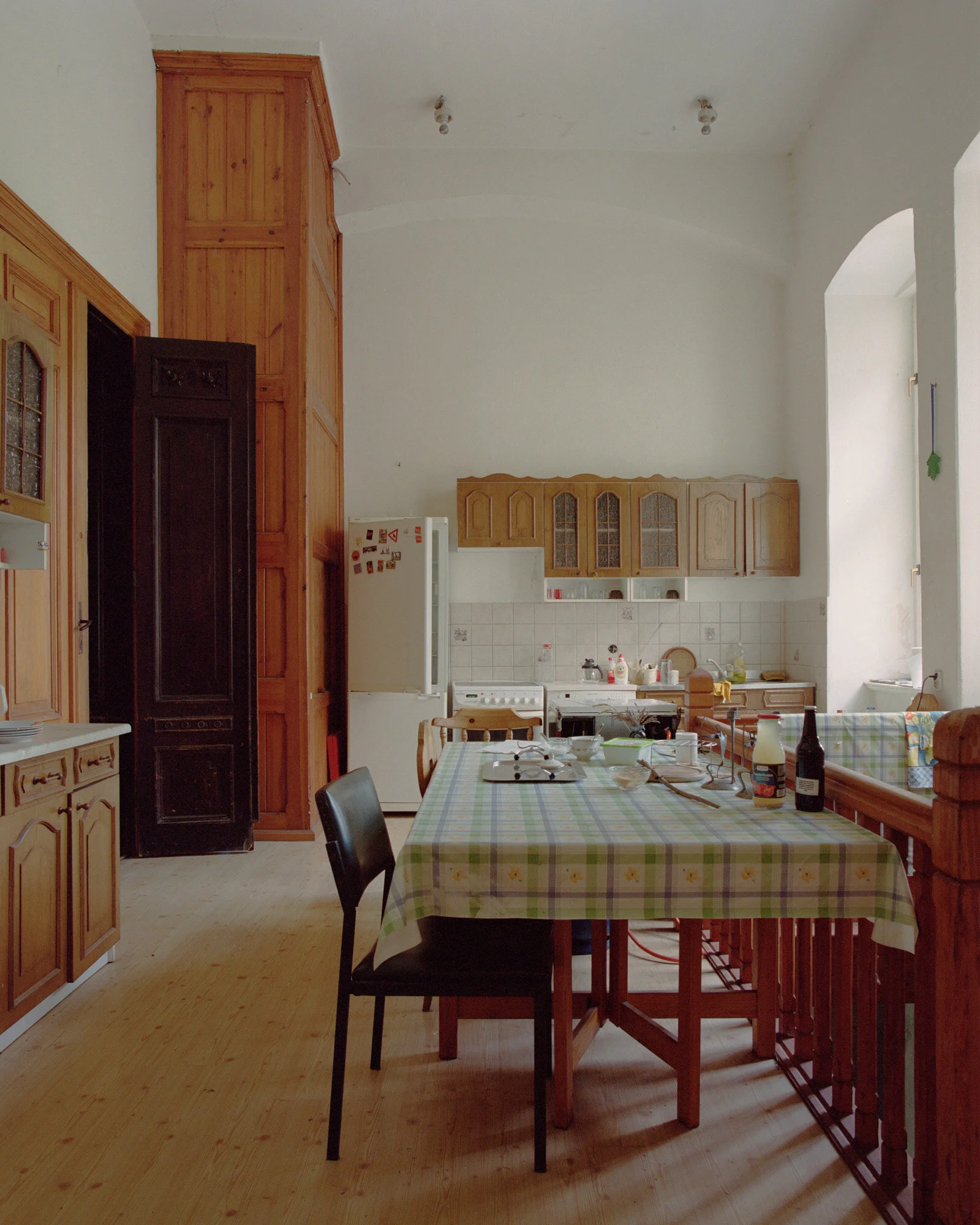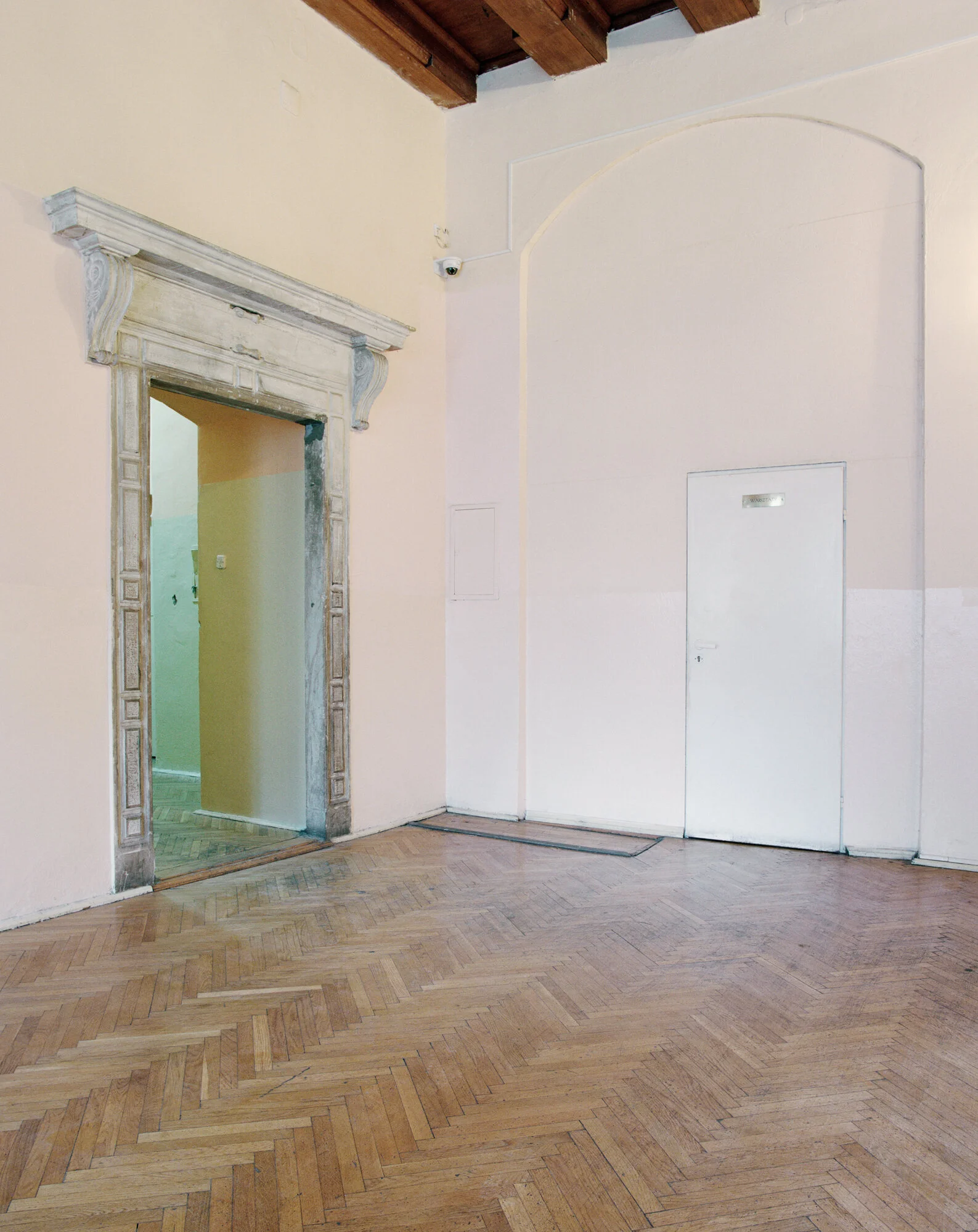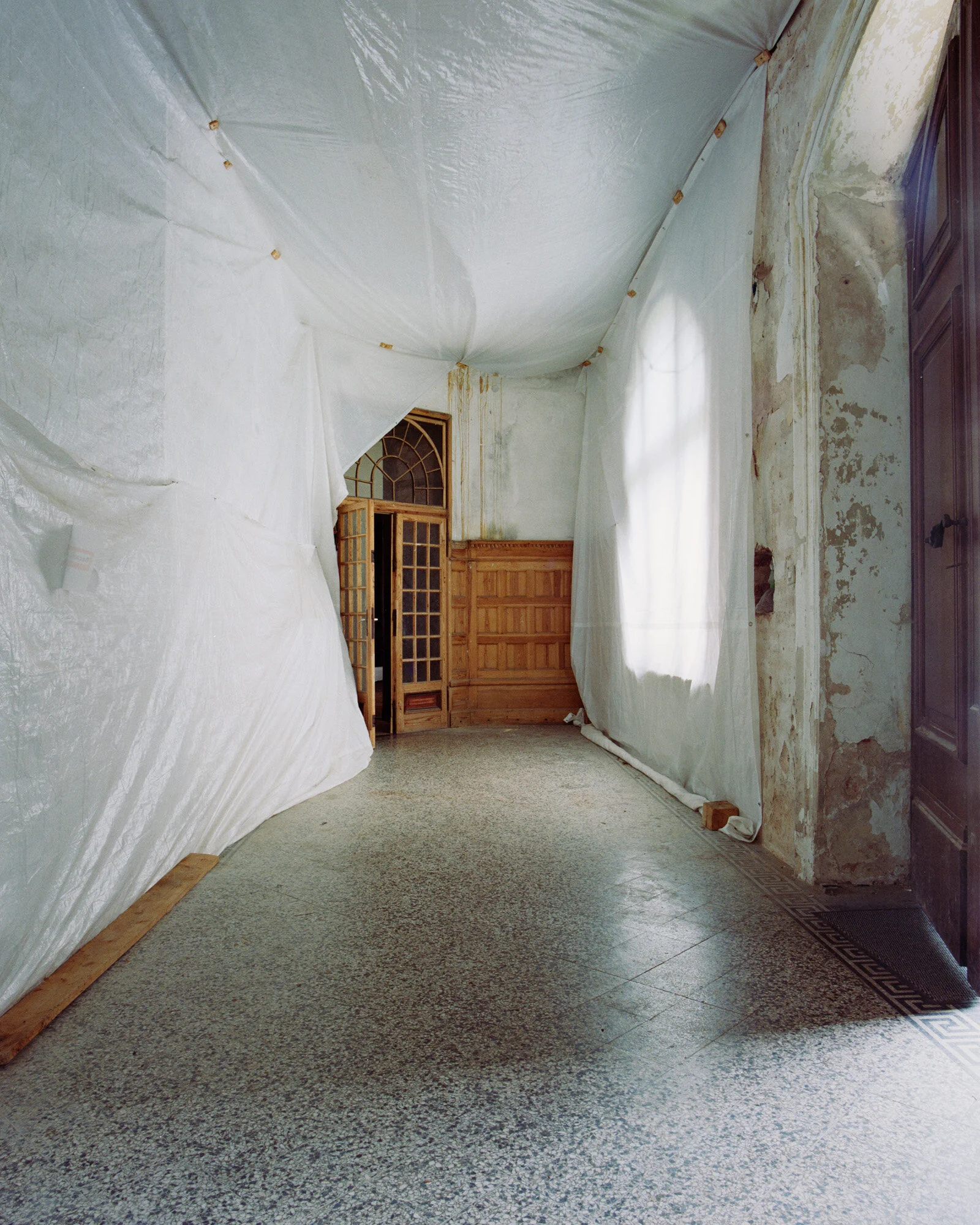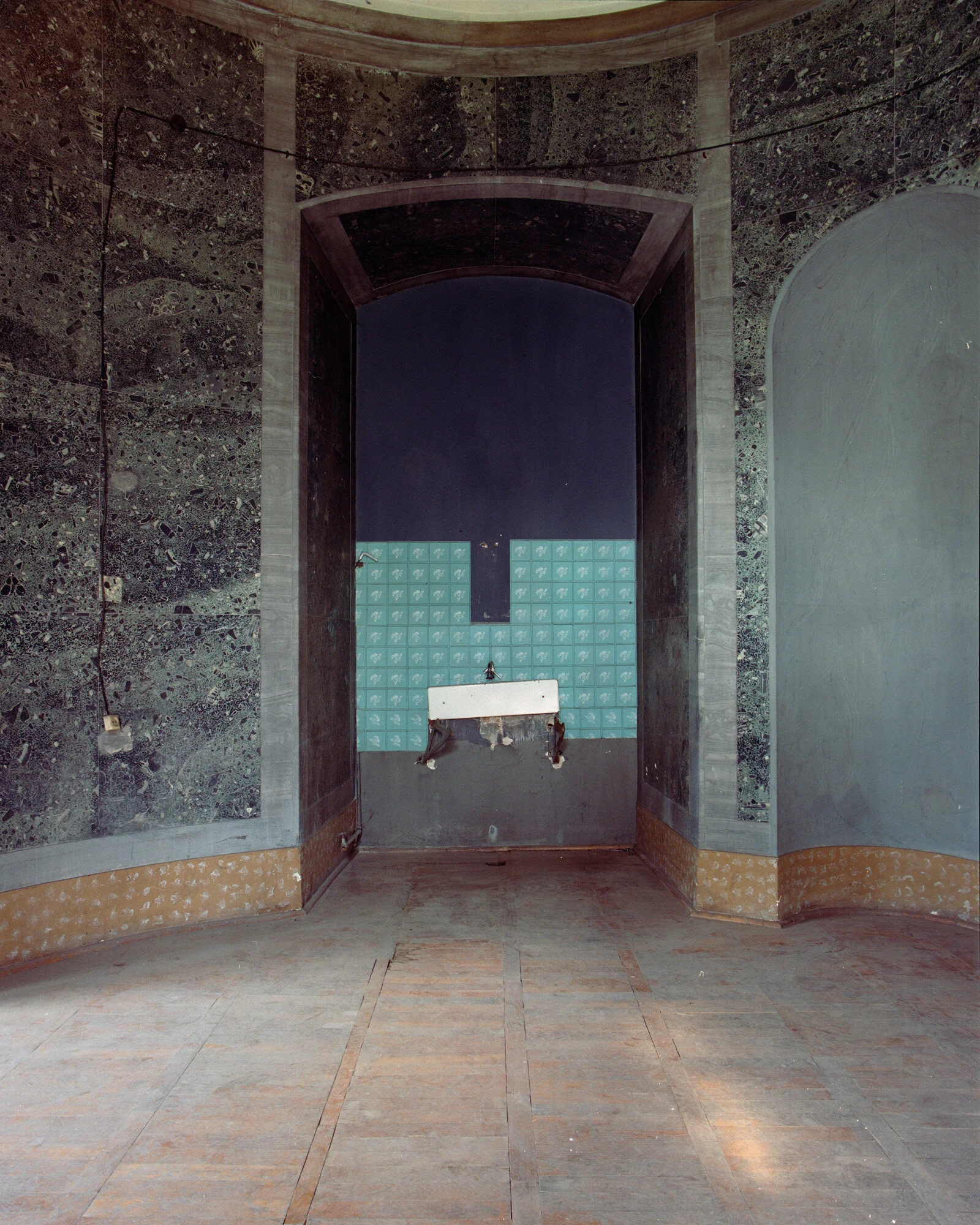Anna Orłowska: Futerał
Photographic Survey - Poland
Futerał, a Polish word that translates as ‘cases’ in English, is the title of a book by the photographer Anna Orłowska which documents the interiors of several historic palaces in Poland. These once opulent buildings were ‘nationalised’ following the Second World War and were transformed by their various new roles. The changes they underwent have left behind layers of adaptation and reuse and, as contemporary refurbishments continue today, in many instances those palaces not preserved as ‘heritage’ museums are, for better or for worse, losing all traces of their former character.
At times at odds with the inclinations of the building’s current occupiers, who often preferred to show off their more recently ‘modernised’ rooms, Orłowska explored and documented hidden parts of the palaces; ancillary spaces where pragmatism and an extreme economy of means have wrought sometimes surreal, sometimes brutal transformations of once grand spaces. It’s often in these ‘back-of-house’ spaces that the last vestiges of the palaces’s original incarnations are visible, where original features sit alongside the crude adaptations of the immediate post-war transformation.
The following selection of photographs, taken at a number of different locations, is essentially a short extract from Futerał, which also includes works of collage, manipulated photographs and texts and commentaries exploring the contemporary status of these historic buildings.
AO After the Second World War, in Poland as well as in other Eastern Bloc states, all castles and palaces were seized from their owners during nationalization campaigns. They began to be adapted to new uses and purposes. For hundreds of them, a new chapter began. They were converted into schools, hospitals, offices, warehouses, state-owned collective farms, and barracks. As they were adapted and repurposed over time, each new renovation left its mark.
On the inside, the palaces began to look and feel less like palaces. Their former grandeur began to fade, be impinged upon, and even to disappear altogether. It became difficult to tell that some had ever been palaces at all. The owner was replaced by the user, but a fascination with la vie de château lingered in odd contradiction with the ideology that now undermined the raison d’être of the reconfigured palaces and contributed to their incremental degradation.
The new nation state also appropriated the symbolic dimension of the palace, building upon it the image of its prestige. On the one hand, the museum-residences were created; on the other hand, certain palatial forms and motifs were borrowed and incorporated into the design of newly erected public buildings such as communist “palaces” of culture or youth. Meanwhile, the People’s Republic moved into the palace. Some of the old palaces still accommodate various state agencies to this day. Others serve as hotels. Still others are empty shells in which time stands still. As if under the influence of a spell, they wait to be rescued and restored.
NOTES
Thanks to Anna Orłowska for her help in compiling this post.
All images © Anna Orłowska.
For more information on Anna’s work visit annaorlowska.com
Copies of Futerał can be ordered from Palm* Studios.
Published 19th February
















